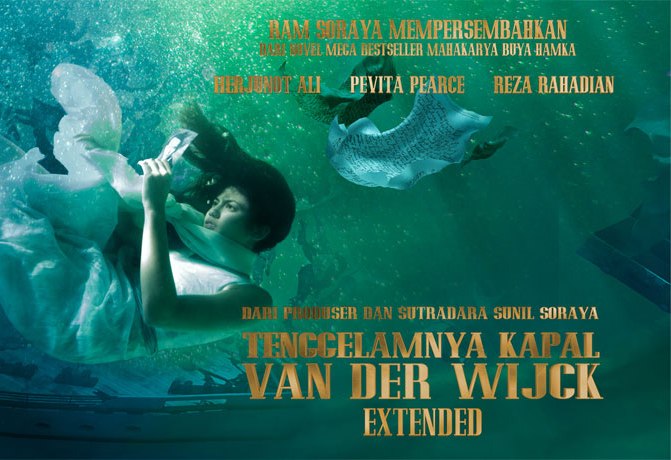



Originally released as a serial, Van der Wijck was republished as a novel after favourable popular reception. Hamka, an Islamic scholar who disapproved of Minang adat (traditions), wrote Van der Wijck as a critique of the discrimination against mixed-race persons prevalent in Minang society at the time, as well as the subservient role of women. It follows the failed love between Zainuddin, a mixed-race man, and Hayati, a pure Minang woman. As a result, the moral values found are (1) morals towards Allah: obedience, love, sincerity, raja’ (hope), tawakkal (surrender), gratitude, and repentance, (2) individual morals: shidiq (honesty), amanah (trust), istiqamah (consistency), iffah (self-refrainment from doing bad deeds), mujahadah (persistence), syaja'ah (bravery), tawadhu' (modesty), shame, patience, and forgiveness, (3) morals in the family: Birrul walidain (act of treating parents gently), the rights and obligation of husbands and wives, the responsibility of parents towards children, and friendship with close relatives, and (4) social morals: welcoming guests, having good relations with the community, khalwah (being together with men/ women who are not their relatives), and ukhuwah Islamiyah (brotherhood among Muslims).Tenggelamnja Kapal van der Wijck ( The Sinking of the van der Wijck) is an Indonesian serial and later novel by Haji Abdul Malik Karim Amrullah (Hamka 1908–1981) published in 1938. The research results are the data related to the implied messages found through (1) character: High-minded, independent, patient, affectionate, and caring, (2) means of the story: identity affirmation, cultural criticism, and moral criticism, (3) symbolism: descendant, veils, tales, nature, and ships, and (4) style and tone: melancholy and sublime, (5) irony: orphanage, poverty, lonely life, and dying-ended love endurance.

The object of this study applied qualitative descriptive approach from Ferdinand De Saussure's semiotic analysis that is the emphasis on the overall and in-depth linguistic structure through the language-parole, signified-signifier, arbitrary-iconic, and syntagmatic-paradigmatic concepts. The overall content of the Novel Tenggelamnya Kapal Van Der Wijck is too strong in inspiring readers to learn about moral values. The existence of literature is influential as a medium for delivering moral messages. Morals are entities that are deeply rooted in a person's soul and encourage him/ her to conduct his/ her character naturally.


 0 kommentar(er)
0 kommentar(er)
